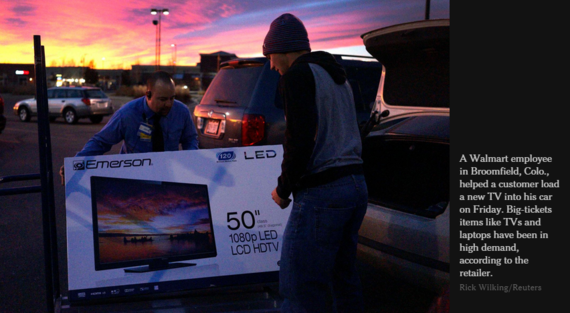The most recent Black Friday stats are in, and they've hit a staggering nearly $7 billion less than last year - in both brick and mortar and online retailers. That's a drop of 11 percent.
Consumers have shorter and shorter attention spans, especially with the rise of fast mobile internet connections. They're used to finding what they need instantly and eschewing any product or service that doesn't fit the bill. If your store, whether it's a brick and mortar or online establishment, isn't attracting customers, it's time to take a serious look at your strategy.
For businesses with ecommerce sites, nothing is more important than developing a simple and effective online shopping experience for customers - especially during the holiday season. Despite this, many businesses still seem to take a half-hearted approach to designing and operating their online storefronts. One of the worst ways this plays out is with a slow site held back by long load times.
Does Speed Really Matter?
The problem for many businesses is that they are blinded by their own affinity toward their brand or company. In essence, they assume the average customer will put up with shortcomings to receive the end benefit. This, however, is very rarely true. In fact, the average customer is always subconsciously looking for a reason not to purchase from you; lack of trust, professionalism, or other shortcomings easily lead to lost sales when there are so many capable competitors.
When it comes to ecommerce sites, business owners need to deliver an experience that's not only smooth, but quick. While the internet as a whole has become faster over the past few years, research shows that ecommerce sites have actually slowed down by 14 percent (to an average load time of 8.56 seconds). Combine that surprising number with the alarming fact that businesses lose one-quarter of online visitors if a site takes more than four seconds to load, and many online-storefront-based companies are left in challenging situations.
What's Slowing Down My Site?
If sales are trending lower than you expected, it's important to start by identifying the underlying cause(s), which will allow you to implement a targeted strategy to effectively alleviate the symptoms. Start by checking your site speed using a tool like Pingdom's website speed test. If your load time is more than about 3 seconds, it's probably causing a decrease in sales. Here are some of the most common causes of slow e-commerce load times:
- Failure to leverage available technology. According to the article "7 Ways to Speed Up Your Website", one of the ways to speed up your site is to make use of CDNs. "Content delivery networks ... are vast networks of servers that are housed around the world. When you store website content like images using these services, rather than storing them locally on your hosting account, you enable the CDN to serve up your information from the server that's closest to your website visitor. The result? Faster load times that will make your customers and the search engines happy."
- Wrong CMS. It's also possible that you're using the wrong content management system (CMS) for your site. Some are built exclusively for web-publishing purposes, others for ecommerce, and others for a combination of the two.
The solution: Understand which CMSs are built for which purposes. For example, WordPress is ideal for blogging, Magento for ecommerce, Morweb for non-profits, and Drupal for general purpose. However, WordPress and Drupal both have plugins and add-ons that can provide ecommerce capabilities. Just be sure you're aware of the intended use of your CMS.
The solution: Use CSS Sprites to bundle images and files together. This is especially useful when using "buttons" or icons containing the same image, which will change based on how the user interacts or clicks. Instead of the browser retrieving two files from your server, it's only necessary to find the single, bundled package.
- Optimize images. Image files are bulky, and too many visuals can slow down your ecommerce site's load time. While you don't want to reduce the quality of your images, you do need to find a way to increase the page loading speed.
Conclusion
The biggest problem with site speed is that webpages are, in general, getting bigger. In 2013, the median ecommerce page contained approximately 93 resources. That jumped to 99 in 2014. In 2013, the median page contained 1,094 kilobytes, which jumped to 1,436 in 2014, equating to more than a 30 percent increase in page size.
Unless you run a major ecommerce site with a loyal following, slow load times will drastically hurt your conversion rates. By understanding which factors affect your site's speed and how to improve problem areas, you'll be better suited not just for sales success during the holiday season, but also for sustained success in the long-term.


